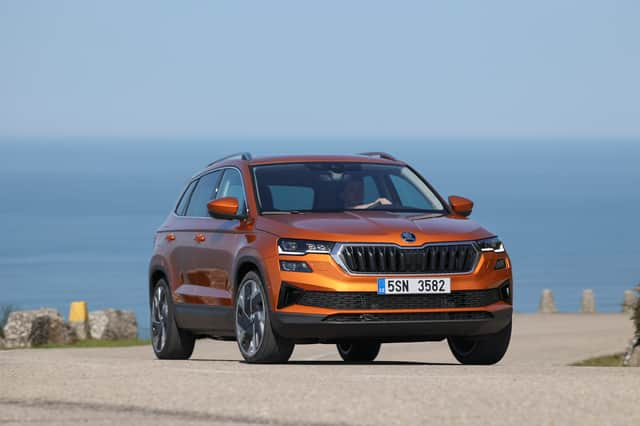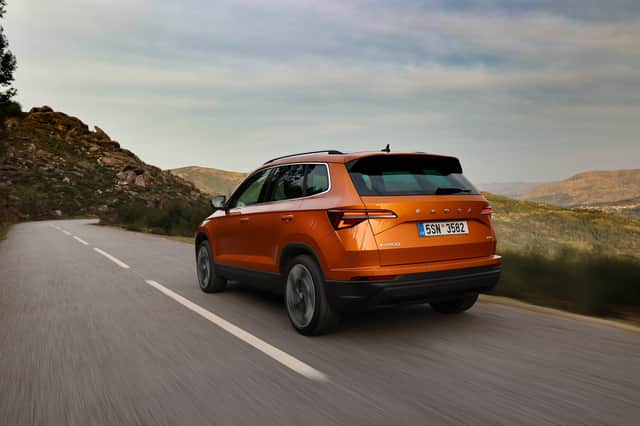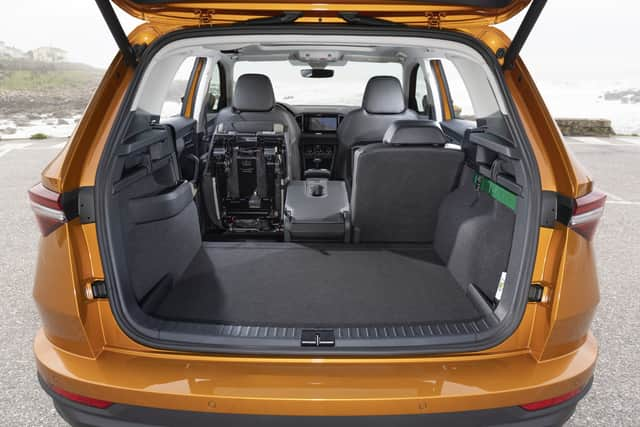Skoda Karoq SE L 1.5TSI review: great value family SUV


It’s easy to forget, when you’ve had the opportunity to drive lots of interesting, exciting and sometimes exotic cars, that the vast majority of buyers aren’t in the market for exotica and many aren’t ready - or can’t yet afford - to take the leap into the world of electrified motoring.
Most buyers care about price, reliability and practicality. A glance at the best sellers lists from the Society of Motor Manufacturers and Traders shows they want SUV and Crossover models. It shows they are still buying petrol or hybrid petrol engines, with the biggest single segment year to date (by some measure) still petrol with 40 per cent of the new car market share.
Advertisement
Hide AdAdvertisement
Hide AdWhat every non-petrolhead, EV enthusiast or badge snob really wants is a Skoda. Well, maybe not everybody. Skoda models are thus far absent from the year’s top ten best sellers list and, as a whole, the manufacturer is ranked 14th for market share in the UK - but that share is increasing, up 51 per cent year on year, meaning Skoda is seventh in the market in terms of growth.
What I really mean, then, is that the Skoda Karoq - as well as the larger Kodiaq - seems to be in a bit of a sweet spot. Fun, but efficient, petrol engines, SUV bodystyle, reasonable pricing - particularly compared with the hybrid and BEV markets - and practicality in spades.
The lack of a hybrid engine in the range might steer company car buyers elsewhere, but private buyers will find PCP deals in the low £200s for a vehicle that ticks all the boxes as a family workhorse.


How practical is the Skoda Karoq?
The Karoq is packed with practical touches that make family life easier. SE-L models, like our test car, are fitted with VarioFlex seats as standard. Dispersing with the typical 60/40 rear split for folding the rear seats flat, each seat can fold individually. Furthermore, it means the rear seats can individually recline, a luxury normally only afforded to front passengers, and even be removed completely.
The only downside I found to the system was the centre rear armrest - and rear cupholders - were built into the rear of the middle seat, rather than a built-in folding armrest. This means the middle seat exposes the boot compartment when folded down to store your cup of coffee. This may delight or dismay dog owners, depending on breed and temperament.
Space for rear passengers is excellent for the class, with only the middle seat cramped for adults due, in part, to the bulky transmission tunnel on the floor.
The back of the driver and front passenger seats feature a foldable and lockable table, as well as built-in mobile phone and tablet cradles. Continuing Skoda’s Q division-esque commitment to keeping its agents looking their best, there’s a secret umbrella hidden beneath the passenger seat. No word on whether or not it shoots poison darts.
Boot space in lower spec models is middling for the segment at 521 litres, it’s smaller than the Volkswagen Tiguan, but has 11 litres more capacity than the largest boot in the Seat Ateca, despite sharing a platform with both. Looking at non-VW group cars, it’s beaten on boot space by Kia’s Sportage, but comfortably out-carries the Nissan Qashqai to the tune of 17 extra litres versus the most capacious model.


Advertisement
Hide AdAdvertisement
Hide AdWith the Varioflex seats fitted in our SE-L test car, however, the Karoq competes higher up the scale, the sliding rear bench meaning the maximum capacity of the 2WD Karoq, with the seats up, rises to 588 litres, Still short of the largest Sportage or Tiguan, but putting even more space between the Skoda and those models at the lower end of the scale.
Engine: 1.5 TSI 150PS
Transmission: Seven-speed DSG
Combined mpg: 45.9 - 43.5mpg
CO2: 139-147 g/km
Max speed: 130 mph
0–62 mph: 9.1 secs
Price: £32,165 (£34,950 as tested)
How good is the Skoda Karoq to drive?
The 1.5-litre TSI 148-bhp engine under the bonnet is a mainstay of the Volkswagen Group line-up and in the Karoq it’s the sweet spot in terms of power and efficiency, gutsy and responsive, with nought to 62mph in 9.1 secs when paired with the automatic seven-speed DSG gearbox.
The car rides well on soft-ish suspension around town, even on the 18-inch alloy wheels, and it’s a pleasant drive on the motorway as well. Handling is about as fine as you get in a modern, small SUV with standard suspension - a touch more body roll in the corners than one would expect from a saloon or a hatch-back, but much more car-like than SUVs of old. The steering is on the light side and doesn’t stiffen up enough for my liking at speed, but it avoids feeling jittery and there is plenty of grip.
Verdict - should you buy a Skoda Karoq?
While tax incentives and low emissions zones are acting as the carrot and stick for many buyers to shift toward hybrid and battery electric vehicles, there’s a sizeable market not yet ready to make the jump and the practical, great driving Karoq is well positioned for families looking for something that does it all and comes with a price tag starting with a two.
The Karoq range starts at a shade under £28,000 and, even upgrading to the 1.5-litre TSI over the 1.0-litre variant (which you should), you can drive away for less than £29,000.
Comments
Want to join the conversation? Please or to comment on this article.
